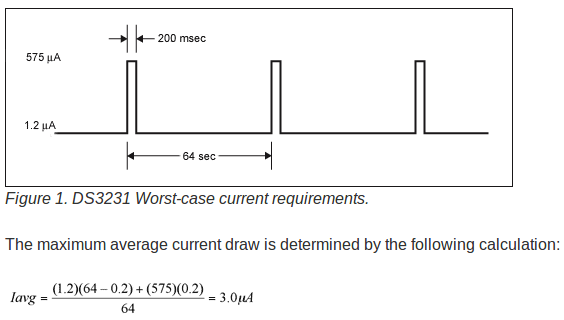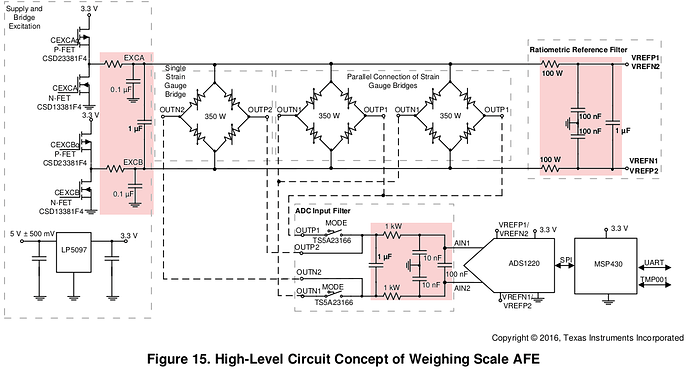Understood.
this I don’t get: HX711’s band gap VBG is 1,25V, VSUP starts @2,7V… but: Where does this 2,45V come from? Don’t you use an external PNP and incorporate the ‘LM317-style’ LDO in the HX711 for sourcing the cell (and AVCC)?
How dare you! ;) You do want to drop an RTC/TCXO which gives you 2ppm worst case over full industrial temp spec, resulting in less than 2 minutes off per year, don’t you?! Any chinese counterfait or ‘ghost-shift’ DS3231 is way better than a DS13x7 or the like. Your design already incorporates this IC part, and it is perfect for a node having a WWAN link itself and no local gateway providing the link as well as accurate system time stamps).
110uA is only true when
- VCC is used as the primary source and
- the DS3231 does not run from VBAT.
If VCC= 0V and VBAT >= 2,3V, the the 3231 lives on a timekeeping ‘battery’ current IBATT as low as typ 1uA, max 3,5uA!
In the data sheet, note 5 on this says:
Current is the averaged input current, which includes the temperature conversion current.
This is the current requirement when running only on VBAT:

(from here; this ‘app note’ is mostly advertisement for DS3232/3234)
So, by sourcing the DS3231 via a GPIO pin (and RV + decoup caps to make this ‘switch’ low-impedance) and using VBAT most of the time (similar to that), you can achieve an averaged one-digit uA drain for the DS3231. You still can wake up the processor via INT by RTC alarms (see INTCN, A1IE (A2IE) and BBSQW bits).
I’m not familiar with the DS3231M (nor DS3232(M), DS3234) which has different entrails (they don’t mention a TCXO anymore but a TC MEMS resonator…that’s why the SO8 packages was feasible).
Before going deeper into DS3231-related things (which would need me to open a new thread ;) ), I’d point to a very comprehensive entry on this, esp. the update on 2014-10-28 - it also discusses the cheap chinese ‘versions’ of the DS3231 in terms of origin and accuracy, and this guy runs great long-term series:

